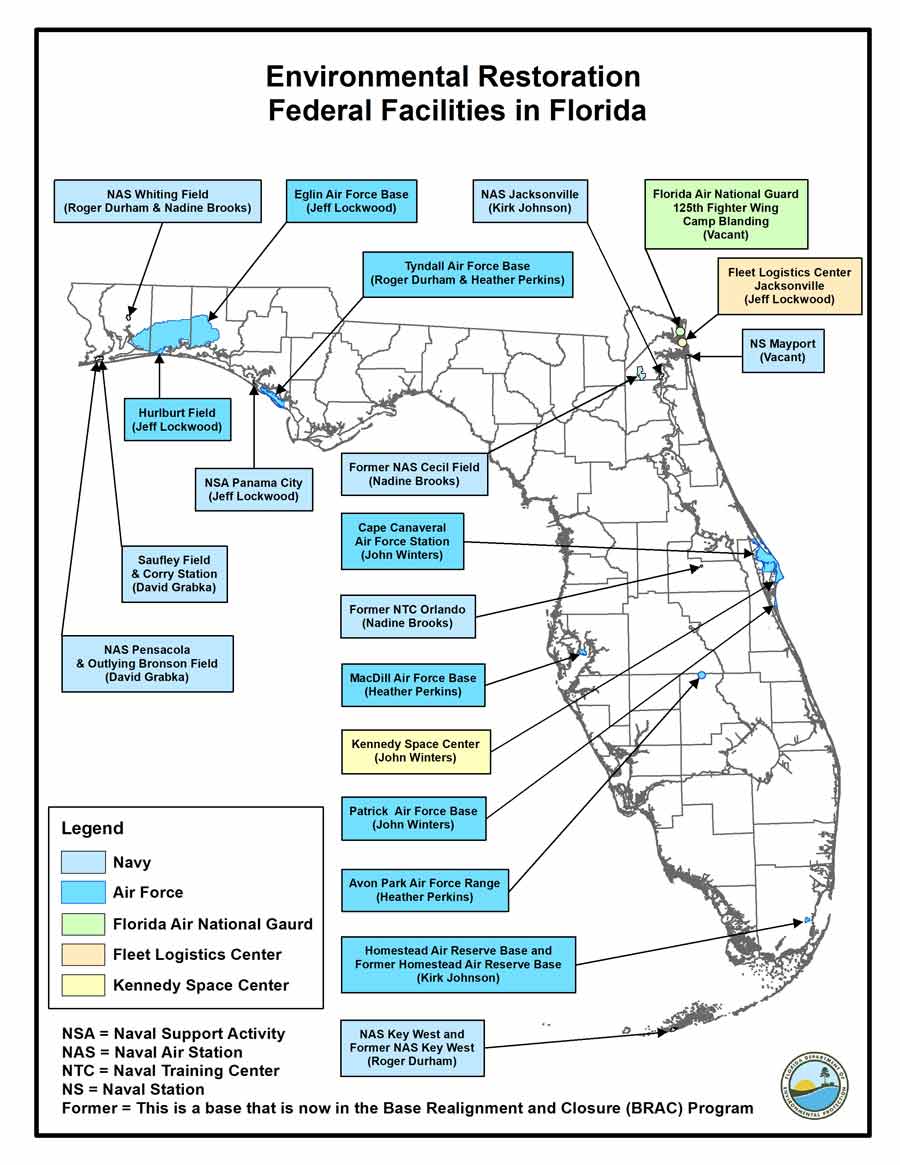Orlando Military Base - For civilian use of this facility and airport information, see Orlando International Airport. For the World War II fighter and bomber training base in Orlando, see Orlando Army Air Base. For the Cold War Tactical Air Command (TAC) missile training base in Orlando, see Orlando Air Force Base.
Boeing B-52D-40-BW Stratofortress, AF serial no. 56-0687, on display at B-52 Memorial Park, Orlando International Airport, Florida (ex-McCoy AFB). Photo taken 4 April 2003.
Orlando Military Base

28°25′46″N 081°18′32″W / 28.42944°N 81.30889°W / 28.42944; -81.30889 Coordinates: 28°25′46″N 081°18′32″W / 28.42944°N 81.30889°W / 28.42944; -81.30889
Community Recreation Office
McCoy AFB (1940–1947, 1951–1975) is a former United States Air Force installation located 10 miles (16 km) southeast of Orlando, Florida. It was a training base during World War II. From 1951 to 1975, it was a front-line Strategic Air Command (SAC) base during the Cold War and the Vietnam War. It was Orlando's largest employer and economic backbone before Walt Disney World opened in 1971.
When McCoy closed as an active USAF facility in 1975, the site was redeveloped and is now known as Orlando International Airport, bearing the original FAA LID airport code of MCO (ie, McCoy) in KMCO and the ICAO airport code.
The installation has had several names during its existence, including Orlando Army Air Field #2, Pinecastle Army Airfield, and Pinecastle Air Force Base.
McCoy Air Force Base was named for Colonel Michael Norman Wright McCoy (born 1905) on 7 May 1958. Colonel McCoy was killed in a crash on 9 October 1957 in a B-47 Stratojet (DB-47B-35-BW), AF Ser. . 51-2177, of the 447th Bomb Squadron, 321st Bombardment Wing, crashed on the wing northwest of downtown Orlando, Florida while participating in a practice demonstration at the annual Strategic Air Command Bomber Navigation and Reconnaissance Competition at Pinecastle, BAF. McCoy was the aircraft commander during the flight and the accident aircraft was one of two Pinecastles modified to carry GAM-63 RASCAL air-to-surface missiles.
The Pensacola Terrorist Attack: The Enduring Influence Of Al Qa`ida And Its Affiliates
At the time of his death, McCoy served as commander of the 321st Bombardment Wing, the host wing at Pinecastle AFB. A very popular figure in Central Florida, Colonel McCoy was laid to rest at Arlington National Cemetery in a funeral ceremony that included a flyover of several B-47s.
The facility was built as a replacement civilian airport in 1940 following the acquisition and conversion of Orlando Municipal Airport (formerly Orlando Executive Airport) by the US Army Air Corps to Orlando Army Air Base. However, with the expansion of Orlando AAB following the establishment of the Army Air Forces School of Applied Tactics (AAFSAT) in 1942, the new civilian airport was also leased to the now rammed US Army Air Force, initially designated Orlando Army Air Field. . #2 and Orlando became AAB's sub-base. On 1 January 1943, it was designated Pinecastle Army Airfield.
Pinecastle AAF is intended to support the Orlando AAB training mission. Two bomb squadrons of the 9th BombardMT Group at Orlando AAB, the 5th, B-24 Liberators, and the 99th, equipped with B-25 Mitchells, B-26 Marauders, and B-17 Flying Fortresses, operated from Pinecastle during the war. The squadrons aim to train future fighter aircrews in advanced combat tactics for various bombing missions.

In addition to training missions, beginning in 1943, Pinecastle AAF was used as the AAFSAT Technical Cter, serving as an Air Force General maintenance and supply depot facility. On 1 June 1944, the 901st Army Air Forces Base Unit (Heavy BombardMT), with two squadrons "G" and "H" assumed responsibility for the bomber training mission.
Military Bases In Florida
Records show that planes from Pinecastle AAF conducted a test bombing of chemical weapons in one of the many bombings and shootings at Pinecastle. It is uncertain whether the chemical warfare materials used in these tests were stored at Pinecastle Army Airfield or brought from the Orlando Poison Gas and Decontamination Yard at Orlando AAB hours before the practice bombing.
With the withdrawal and closure of the wartime airfield following the German surrender in May 1945, units from other bases in Florida were consolidated into Pinecastle AAF. On 1 July 1945, jurisdiction of the field was transferred to the Air Proving Ground Command at Eglin Field, Florida. The 901st AAFBU was inactivated and replaced by the 621st Base Unit.
In August 1945, under the Proving Ground Command (PGC), the base was used for B-32 Dominator bomber testing, although field operations were severely hampered by a lack of personnel due to post-war demobilization in 1945. The VB-6 Felix infrared heat-seeking and VB-3 Rezon radio-controlled gliding bomb weapons were also tested.
In early January 1946, Bell Aircraft Corporation chief test pilot Jack Williams tested the X-1 supersonic aircraft, originally designated the XS-1, due to the area's remote location and 10,000-foot runway.
Missouri Ang's 35th Engineer Brigade Commander Visits Arsouth > Joint Base San Antonio > News
In March 1946, the X-1 program was transferred to Muroc AAF, California. The move was as much a logistical problem as anything else, as Pinecastle was deemed unsuitable for the X-1 project. A move to the remote California desert ensured that the X-1 project team could maintain secrecy, an important factor considering that the project was highly classified at the time. In addition, Muroc has a wide landing area, thanks to the surrounding dry lake, and good visibility. The X-1's high sink rate and problems keeping the aircraft visible in the frequent clouds over Florida also added two more votes to the Army Air Corps' decision to move to Muroc.
This aircraft, later flown by Th-Captain (Brigadier Gerral, USAF, retired) Chuck Yeager, was the first aircraft in history to successfully exceed the speed of sound in level flight. With the transfer of the X-1 project, Pinecastle AAF was closed and the wheel site was moved to the city of Orlando in 1947 with a reversal clause for future military use if deemed necessary for national defense purposes.
With the outbreak of the Korean War, the Air Training Command (ATC) of the United States Air Force reactivated the facility on September 1, 1951, moving it to Pinecastle Air Force Base. ATC then $100 million Military Construction on World War II facilities (MILCON) program, to include items on the existing north-south runway and build a parallel north-south runway, both over 12,000 feet lgth. Actual flight training activities, however, did not begin until early 1952.

The 3540th Flying Training Wing (later redesignated the 4240th Flying Training Wing) was activated at the base to train personnel on the Strategic Air Command's (SAC) new Boeing B-47 Stratojet medium jet bomber. Eighty-four B-47s were assigned for training, and SAC transferred thirty experienced aircraft commanders to Pinecastle to serve as instructors. According to the original plan, ATC would train 49 crew members in 1952. But from the start, the B-47's mechanical problems and lack of equipment hampered training. Besides, the base is inadequate in terms of training facilities. The first B-47 class arrived at the base on 6 November 1952 and the first B-47 crew training program began a few weeks later with the Class 53-6A completing combat crew training on 22 December 1952. The first trained B-47 crews graduated from training in the first half of 1953.
Naval Security Group Activity Sabana Seca Puerto Rico Patch
On 1 January 1954, the Air Training Command transferred the B-47 crew training mission and base jurisdiction to the Strategic Air Command at Pinecastle AFB.
B-47E-90-BW Stratojet, AF Ser. 52-0477, of the 321st Bomb Wing on the ramp. This B-47 was at AMARC in November 1964.
The control tower will continue to be used at McCoy AFB and as the first control tower at Orlando International Airport.
On 15 December 1953, the 321st Bombardment Wing (Medium) was activated at Pinecastle AFB, absorbing all B-47 bombers and KC-97 tankers at the base. The B-47 combat crew training mission was also transferred from ATC to SAC. Colonel Michael N.W. McCoy, former commander of the 306th Bombardment Wing at MacDill Air Force Base, Florida, was appointed commander of the 321st Bombardment Wing on 24 May 1954, earning the unofficial distinction of being the "Dean" of the B-47 at Strategic Air Command. . Commander of the Stratojet" aircraft.
Br, 1 Bath House
In July 1954, the 19th Bombardment Wing joined the 321st at Pinecastle AFB, and both units came under the control of the 813th Tactical Aerospace Division.
The 813th was later inactivated in the summer of 1956 when the 19th Bomb Wing moved to Homestead Air Force Base, Florida.
In November 1957, the base hosted medium and heavy bombers that participated in the annual Strategic Air Command Bombing Navigation and Reconnaissance Competition. During the competition, a B-47 plane crashed north of downtown Orlando, killing Colonel McCoy, Royal Air Force Group Captain John Woodroffe, Lieutenant Colonel Charles Joyce, and Major Vernon Staff. Despite this tragedy, the 321st Bomb Wing, under its new commander, Colonel Robert W. Under the guidance of Strong, a junior, the meet's top honors, including the coveted Fairchild and McKay trophies, stand out.

Marriage benefits, military onesource marriage counseling, military marriage counseling, military benefits, military proxy marriage, army marriage benefits, military marriage, marriage military benefits, air force marriage benefits, dual military marriage benefits, military marriage records, military marriage retreat
0 Comments